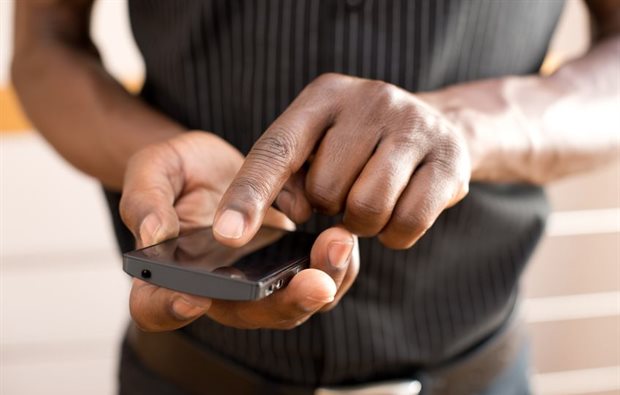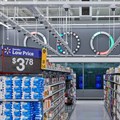In an era of rapid technological change, and with the Fourth Industrial Revolution (4IR) on everybody's lips, I ask the question: "But what about lower-income retail shoppers in emerging markets like South Africa?" Are retailers embracing technology in this latest industrial revolution to serve the lower-income segments, or are they being forgotten?
Throughout the years, technology has proven to be a force to be reckoned with: it has shaken almost every industry and economy. From large corporates to tertiary institutions, the term ‘4IR’ reverberates in offices, corridors, and corporate meetings.
Despite the big talk about 4IR, it seems to thrive more in ‘developed’ economies, due to the presumed technological savviness of their consumer markets.
However, in emerging markets such as South Africa, a large proportion of their consumers still fall into the lower-income bracket. These lower-income brackets are arguably less technologically savvy, as they are assumed to have limited access to the latest technologies, and are also less likely to be able to afford the ever-debated cost of data.
Are retailers therefore deliberately excluding these massive consumer markets on the basis of generalised – and possibly false – assumptions? Are they cutting back on their 4IR strategies under the impression that these will not take off in their lower-income earning segment?
Disruptive technologies
In answering this question, let’s first unpack the Fourth Industrial Revolution (4IR). It is an era that has seen the emergence of disruptive technologies such as robotics, the Internet of Things (IoT), artificial intelligence, and virtual reality. These new technologies have given rise to new jobs, altered processes and operations, and new consumer lifestyles.
As a result, businesses have had to adapt their strategies to keep up with such technological advances. Retailers have been particularly impacted by 4IR; and evidence is rife of how they have embraced the emerging technologies of the 4IR.
In developed nations, 4IR technologies are seen in retail in the following ways:
• Virtual change-rooms: Consumers can enter a change-room and use the interactive mirror to reflect an outfit they want to try on. The mirror can be voice-activated: the consumer tells the mirror what they would like to try on – for example, skirts. The mirror would then provide the customer with all the skirt options available in-store.
• In-store robots: Robots are used in-store to replace human staff. They guide and direct consumers, fulfill logistics-related tasks, improve overall operational efficiency, and enhance the customer experience.
• Internet of Things (IoT): Integrating channels use customer data and technology to optimise the shopping experience for consumers. The US company, Amazon, created Amazon Go, which are physical Amazon stores that customers can visit. In them, shoppers can pick and choose products as they like, load them into their baskets, and simply walk out of the store. The products are electronically tagged, and are automatically scanned by a device as the consumer leaves. The purchased products are then charged to the consumer’s online Amazon account.
Such technologies are great ideas for developed economies, which have technologically advanced consumers and easy access to such technologies. However, to return to the South African debate: as an emerging market, we have to ask whether these exciting technologies will add value and be adopted by the large retail consumer base that falls into the low-income bracket?
SA's largest consumer market
Retail in South Africa is a booming industry. It currently contributes 15% of South Africa’s GDP. Lower-income earners represent an estimated R300 billion per annum of this 15%, making them the largest consumer market in South Africa. They spend around 64% of their household income on food and groceries.
Although these consumers earn an average of R6,000 per month, many of them own and use smartphones. A study by a product manager at GfK South Africa found that low-end smartphones – those most often bought by lower-income earners – accounted for 61% of overall unit sales of smartphones in 2018. Such access to smartphones suggests that consumers have access to the internet, websites, online shopping, and e-commerce.
In South Africa, e-commerce has been growing at 26% a year since 2017. The number of e-commerce users is expected to reach around 24 million in 2021, and 55% of consumers buy products online using their smartphone phones.
From such statistics, it is obvious that South Africa’s retail landscape is thriving, and that its largest consumer market – the lower income earners – offers many opportunities.
Let’s review a typical consumer person from this segment.
Meet Zandile, a 30-year-old single mother to five-year-old Jabu, her son. She works as a cleaner in a large corporate in Sandton, and lives in Alexandra township with her mother and Jabu. Zandile’s mother looks after Jabu while Zandile works Monday to Friday from 07h00 to 18h00. Zandile earns R5,000 a month, the majority of which is spent on Jabu’s school fees and running her household.
Zandile uses her cell phone to communicate with her mother and Jabu via WhatsApp while she is at work. However, she often has to buy top-up airtime and data bundles, which she finds quite expensive. Her long working hours make it hard for Zandile to go to the shops, so she often uses her lunch hour to do her shopping. She commutes via taxi to and from work, as well as to the shops, and struggles to carry all the groceries by herself.
Zandile represents many low-income consumers in South Africa who share the same struggles. This example shows that, although these are low-income earners, many of them have smartphones, and know how to use the technology. If this is the case, why are retailers not using this technology to improve the lives of these consumers? Do they assume that only middle- to high-income earners have access to such technologies, and are tech-savvy?
Untapped market for 4IR
In 2018, a study found that the most common activities of low-income earners on their smartphones were using social media, searching for information, and texting via WhatsApp. So low-income earners should not be ruled out as a potential target market for 4IR.
The world we live in runs on all sorts of applications, such as Uber and Zomato. Why has no one yet come up with an app to target low-income earners? A free mobile app using virtual reality could allow low-income earners to browse an actual shop, pick their products off the shelves, and add these to their shopping cart. They would be able to make their purchases online, which would then be delivered free to their chosen location to save them from carrying heavy bags.
Even taxis and taxi ranks could be used to advertise products on large posters with associated QR codes. Users could scan the QR code on the poster, and the products would be automatically added to their online shopping carts.
Retailers could also use the IoT to gather information and data about their consumers to better meet their needs and tailor their promotions accordingly. Even offering free Wi-Fi in stores so that consumers can shop easily and access the retailers’ websites would cut down the high costs of buying data bundles.
Retailers should also consider adapting their mobile sites and applications to use less data by designing ‘lite’ versions for lower-income earners who browse and shop online.
The power of retailers lies in their ability effectively to reach and communicate with these low-income consumers through their mobile devices. It’s time for South African retailers to make their mark on emerging markets, and to challenge the technology industry to come up with affordable solutions that enhance the lives and retail experiences of lower-income consumers.






































